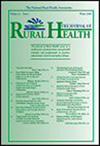Understanding the influence of social determinants of health on symptom reporting in pediatric cancer
Abstract
Purpose
Children with cancer experience significant symptom burden, worsened by social deprivation. This study examines social determinants of health, including Appalachian residency, influence on symptom burden.
Methods
Caregiver-child dyads were recruited within 1 year of cancer treatment. Addresses were coded for social determinants of health (SDOH) measures: Area Deprivation Index (ADI), rurality, medically underserved areas (MUA), and Appalachian residency. Total child symptom scores (0–31) were calculated for dyad reports using the Memorial Symptom Assessment Scale. Provider matching symptom reports were extracted from electronic medical records. Descriptive statistics and correlations examined associations between child, caregiver, and provider symptom reports and SDOH. Significant correlations informed three multiple linear regression models examining SDOH predictors of child symptoms by reporter.
Findings
Fifty-five caregiver-child dyads were recruited. Caregivers were 65.5% female and 87.3% White. Children were 50.9% male, 85% White, an average of 12 years old, 30.9% rural, and 20.0% Appalachian. ADI scores (M = 4.22) indicated moderate disadvantage, and 14.5% were medically underserved. On average, children reported 8.61 symptoms, while caregivers reported 7.15, and providers recorded 1.87 child symptoms. For children, a bivariate association and significant regression model revealed Appalachian children experienced a higher number of symptoms. For caregivers, bivariate associations indicated a higher ADI was associated with more symptoms. For providers, bivariate associations revealed higher symptoms were associated with rurality, MUA, and Appalachian residency, though only Appalachian residency remained significant in the regression model.
Conclusions
Results suggest Appalachian residency is associated with higher symptom burden for children with cancer. Findings support culturally sensitive care to minimize symptom burden.

 求助内容:
求助内容: 应助结果提醒方式:
应助结果提醒方式:


